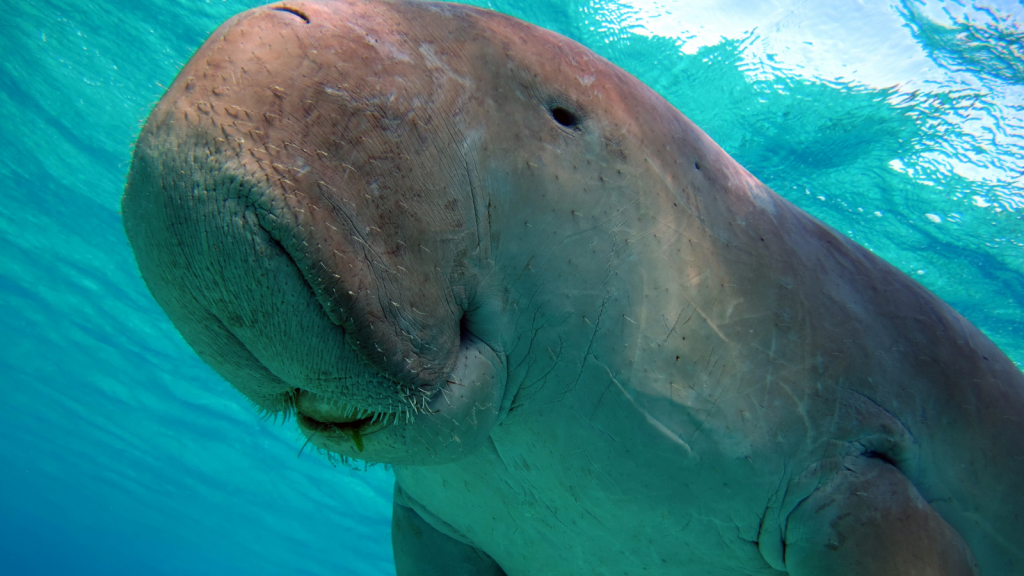Imagine a creature that looks like a cross between a walrus and a dolphin, grazing peacefully on underwater meadows. This is the dugong, a marine mammal that has captured the hearts of many. These gentle giants are often called sea cows because of their plant-based diet and slow, graceful movements. Found in warm coastal waters from East Africa to Australia, dugongs have been swimming our oceans for millions of years. Despite their long history, these remarkable animals face many threats today. Let’s explore some intriguing facts about these captivating creatures.
Dugongs Are Closer to Elephants Than Whales
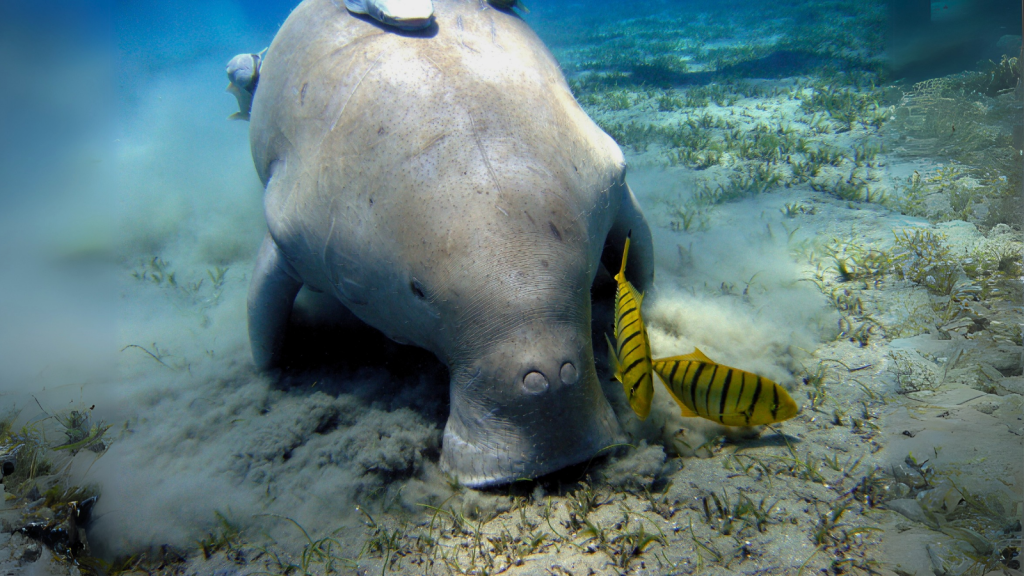
Despite their aquatic lifestyle, dugongs are more closely related to elephants than to whales or dolphins. They belong to the order Sirenia, which includes manatees. This connection to land mammals is evident in their body structure and behaviour. Like elephants, dugongs have tough, bristly hair on their bodies and a keen sense of touch.
They Have a Split Upper Lip
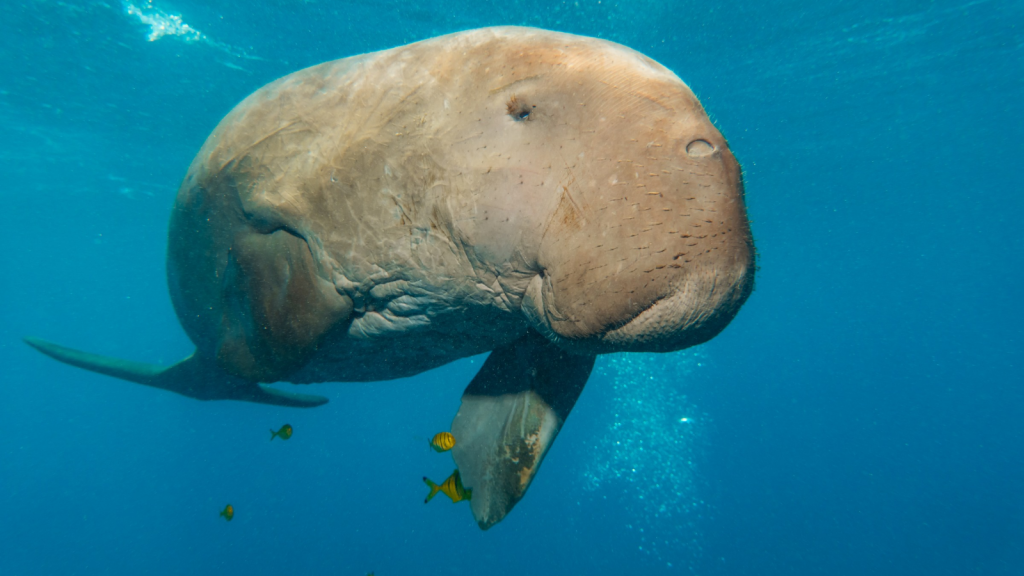
Dugongs have a unique split upper lip that they use like two fingers to grasp and pull out seagrass. This specialised mouth structure allows them to efficiently feed on their primary food source. It’s a perfect adaptation for their underwater grazing lifestyle. The bristles on their upper lip are highly sensitive, helping them to locate and identify suitable seagrass.
Dugongs Can Live for 70 Years

These gentle giants have an impressive lifespan, with some individuals living up to 70 years in the wild. Their long life allows them to play a crucial role in maintaining the health of seagrass ecosystems over many decades. However, this slow maturation also makes them vulnerable to population declines. Dugongs don’t reach sexual maturity until they’re about 10-17 years old, further slowing their population growth.
They’re the Only Strictly Marine Herbivorous Mammal
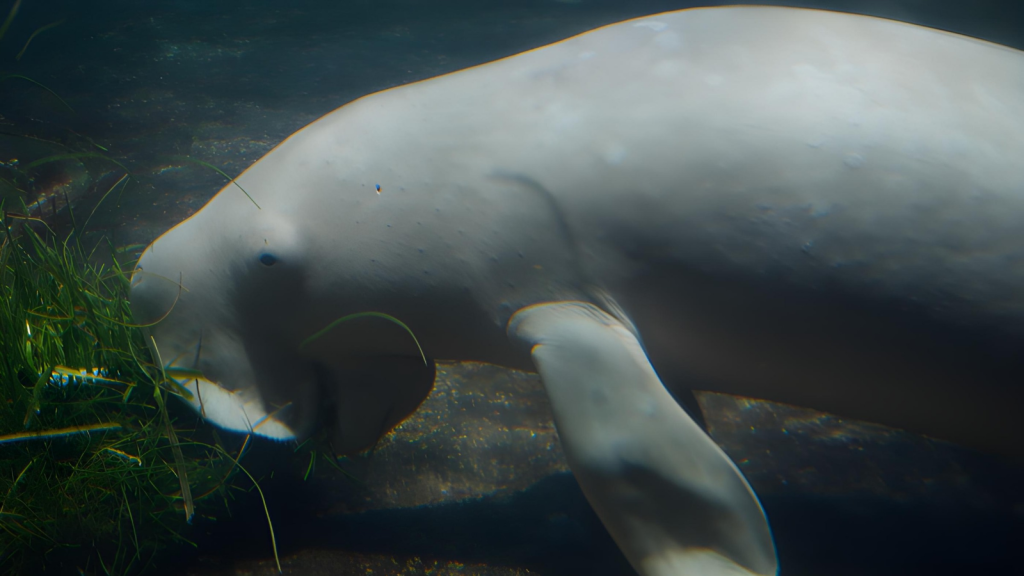
Unlike their cousins, the manatees, which can live in freshwater, dugongs are the only marine mammals that feed exclusively on plants. They spend their entire lives in saltwater, grazing on seagrass meadows. This unique diet makes them vital to the health of coastal ecosystems. Their constant grazing helps to maintain the diversity and productivity of seagrass beds.
Dugongs Have Tusks
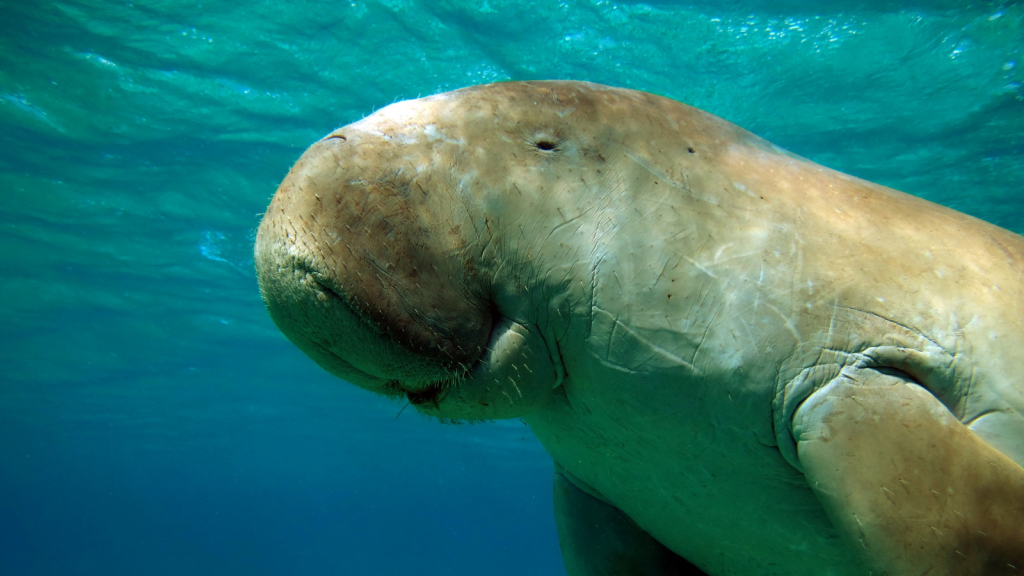
Male dugongs develop tusks that break through the gums at around 12 years of age. These tusks are used in competition with other males for mates. Female dugongs also have tusks, but they usually remain buried in the jaw and don’t break through the gums. The tusks are actually enlarged incisor teeth and can grow up to 30 centimetres long in males.
They Can Hold Their Breath for Six Minutes
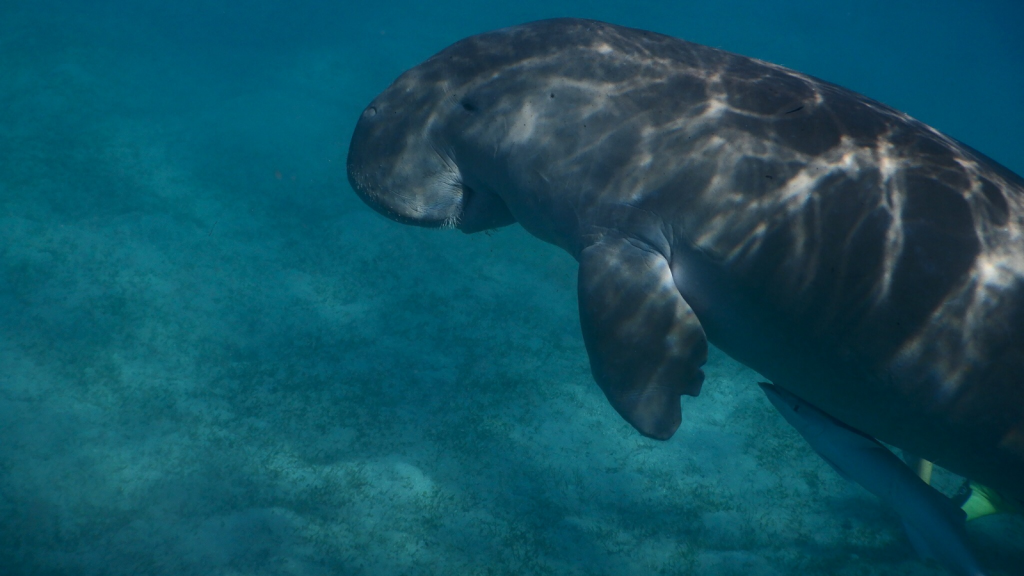
Dugongs are excellent divers and can stay underwater for up to six minutes at a time. This ability allows them to feed efficiently on seagrass in deeper waters. They surface regularly to breathe, creating a distinctive trail of circular ripples on the water’s surface. Dugongs typically dive to depths of 10-20 metres, but have been recorded diving as deep as 39 metres.
Dugongs Communicate With Chirps and Whistles
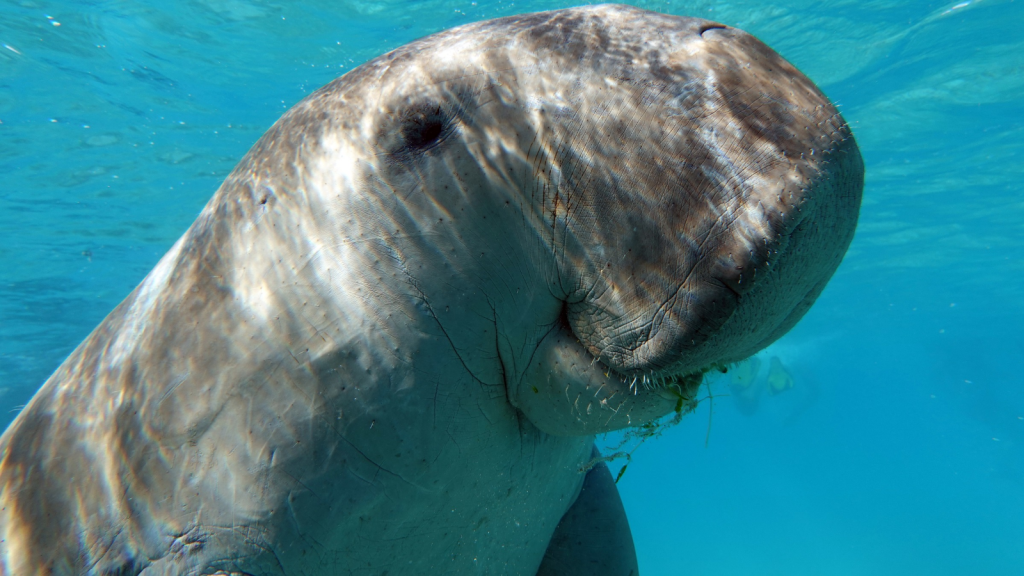
These gentle giants are not silent creatures. They communicate using a range of sounds, including chirps, whistles, and barks. These vocalisations are particularly important between mothers and calves, helping them stay in contact in murky waters. Dugongs also produce subsonic calls that can travel long distances underwater, potentially allowing them to communicate over several kilometres.
They Have Poor Eyesight but Excellent Hearing
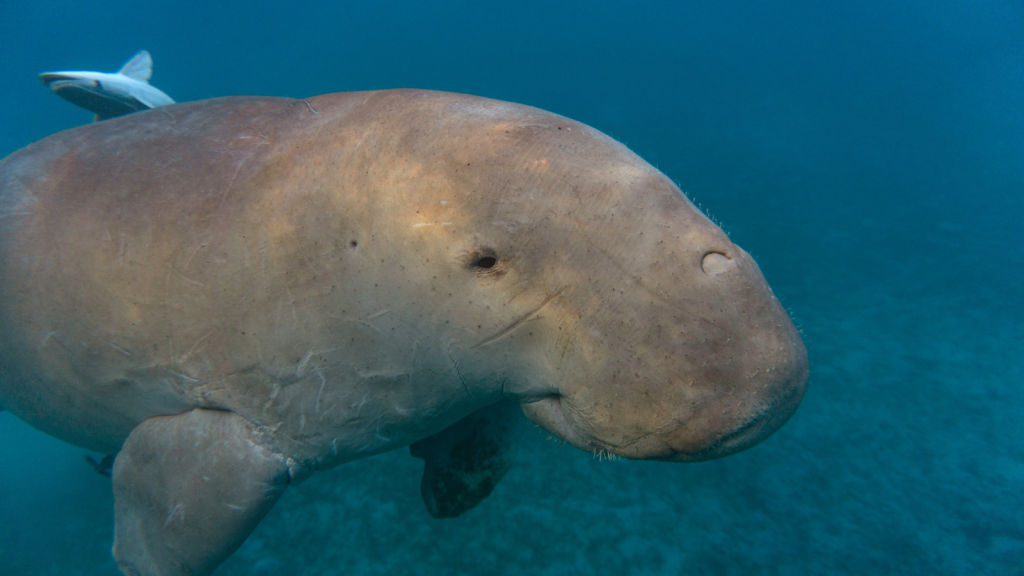
Dugongs have small eyes and poor vision, but they make up for it with excellent hearing. They rely on their sensitive ears to navigate and locate food in often turbid coastal waters. Their whiskers also help them sense their surroundings and find tasty seagrass. These whiskers, called vibrissae, are so sensitive they can detect minute changes in water pressure and movement.
Dugongs Are Known as ‘Sea Pigs’ in Japan
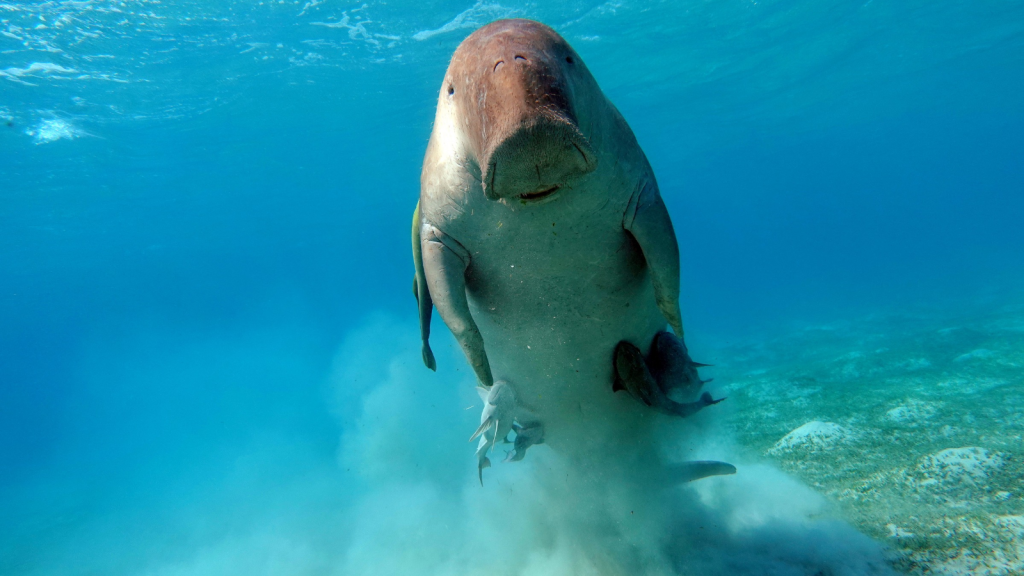
In Japan, dugongs are called ‘ジュゴン’ (jugon), which translates to ‘sea pig’. This name likely comes from their rotund body shape and the grunting sounds they sometimes make. Despite this unflattering nickname, dugongs are revered in many cultures. In parts of Indonesia, dugongs are considered reincarnations of women, and it’s believed that their tears can be used as love charms.
They Only Have One Calf Every 3-7 Years
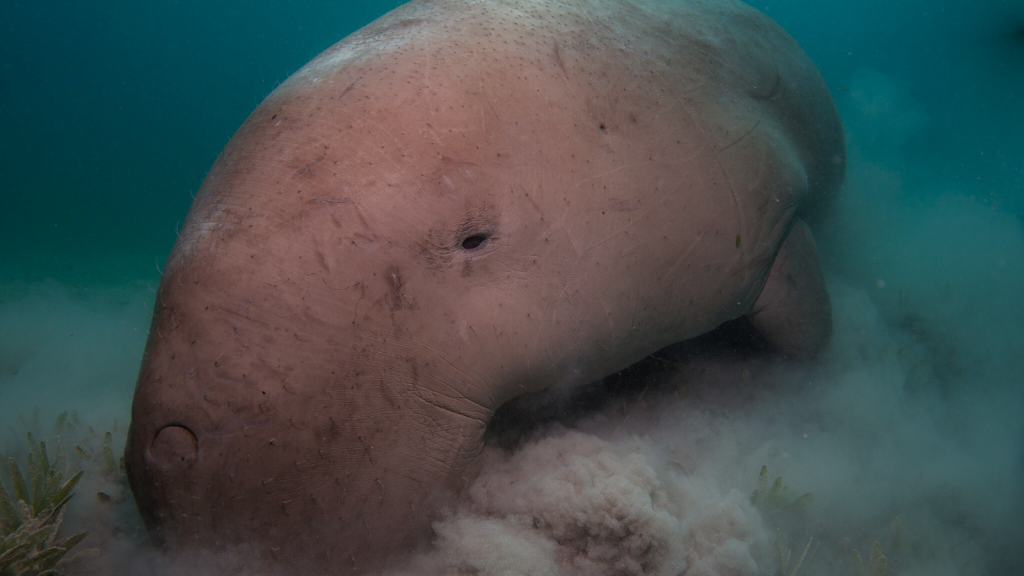
Dugongs have a very slow reproductive rate. Females usually give birth to only one calf every three to seven years. This low birth rate, combined with a long gestation period of 13-15 months, makes it difficult for dugong populations to recover from declines. Calves stay with their mothers for about 18 months, learning essential survival skills during this time.
Dugongs Inspired Mermaid Legends
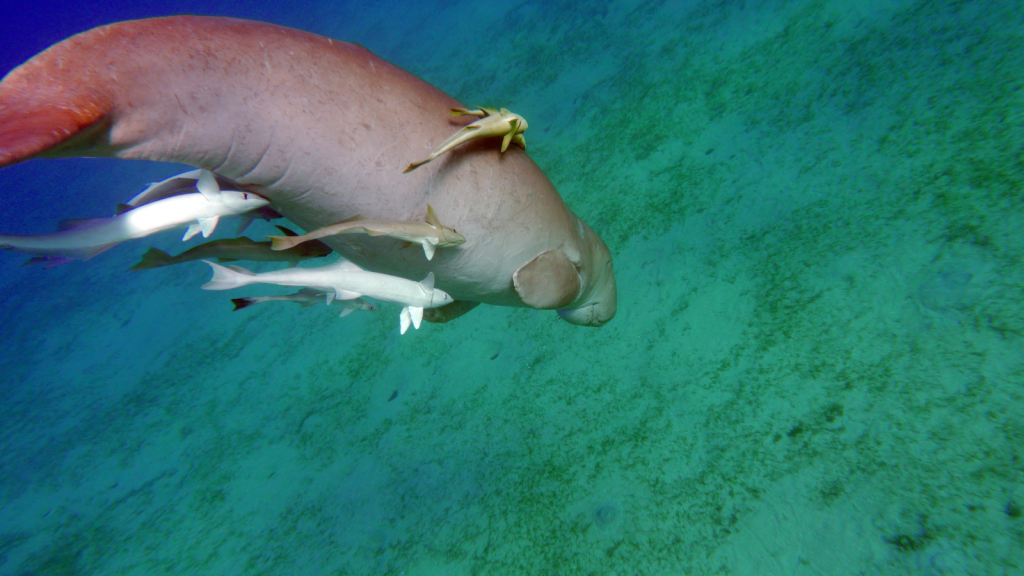
It’s believed that dugongs, along with manatees, may have inspired ancient mermaid legends. Sailors who spotted these animals from a distance might have mistaken them for half-human, half-fish creatures. This connection has earned them the nickname ‘sea sirens’. Christopher Columbus reportedly mistook manatees for mermaids during his voyages, describing them as “not half as beautiful as they are painted.”
They Can Weigh Up to 1,100 Pounds
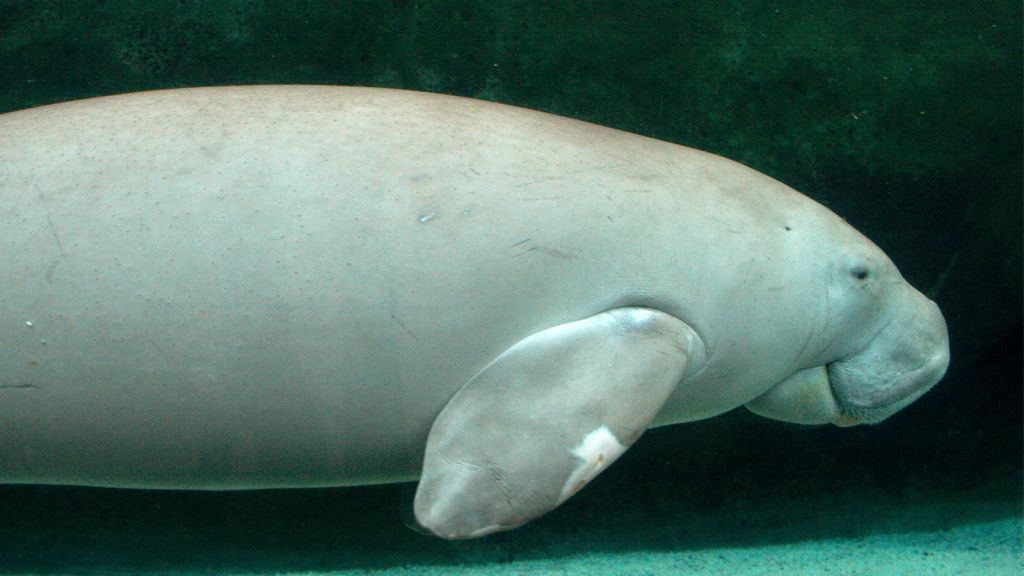
Adult dugongs can grow up to 3 metres long and weigh between 230 to 500 kilograms. Some exceptional individuals have been recorded weighing up to 1,100 pounds. Despite their size, they are gentle and non-aggressive animals. Female dugongs are typically larger than males, an unusual trait among mammals.
Dugongs Have Been Around for 50 Million Years

The dugong lineage dates back about 50 million years, making them one of the oldest marine mammal groups. They’ve survived numerous changes in the Earth’s climate and sea levels. However, they now face unprecedented threats from human activities. Fossil records show that dugongs once had a much wider distribution, including the Mediterranean Sea and the Caribbean.
They’re Considered Vulnerable to Extinction
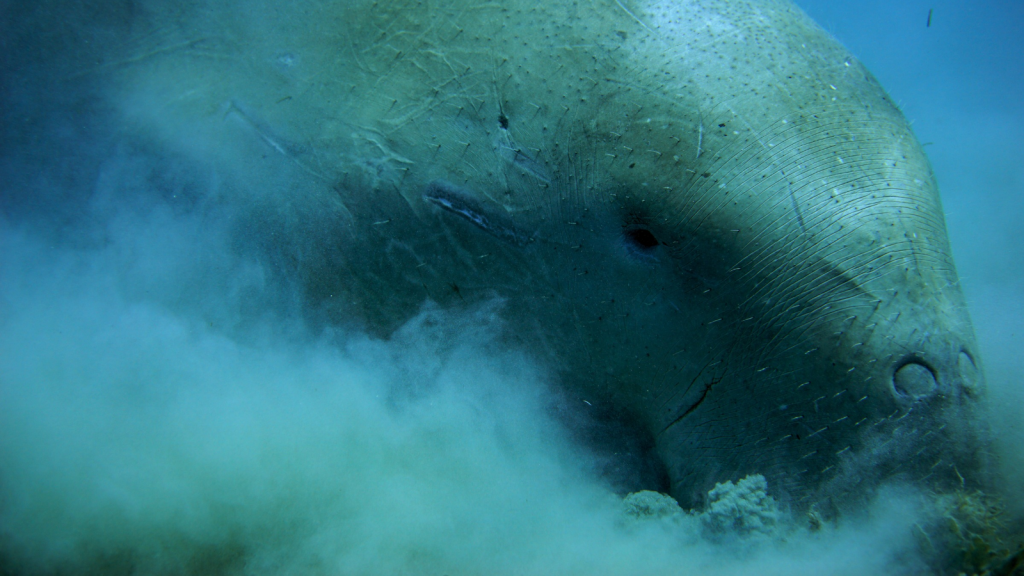
Due to hunting, habitat loss, and accidental capture in fishing nets, dugongs are listed as vulnerable to extinction by the International Union for Conservation of Nature. Some isolated populations, like those in Okinawa, Japan, are critically endangered. Climate change poses an additional threat, as rising sea temperatures and ocean acidification can damage the seagrass meadows dugongs depend on.
Dugongs Can Eat 40 kg of Seagrass a Day
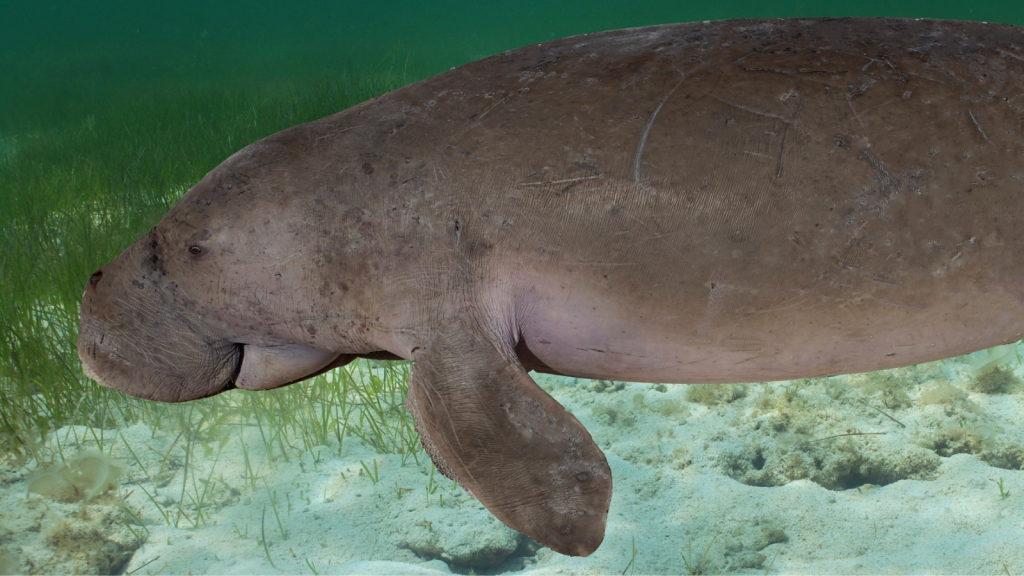
An adult dugong can consume up to 40 kilograms of seagrass in a single day. This voracious appetite helps maintain healthy seagrass ecosystems by promoting new growth. Their feeding habits also help cycle nutrients in coastal waters. Dugongs prefer seagrass species with high nitrogen content and digestibility, such as species from the genera Halophila and Halodule.
They Have a Special Stomach to Digest Tough Plants
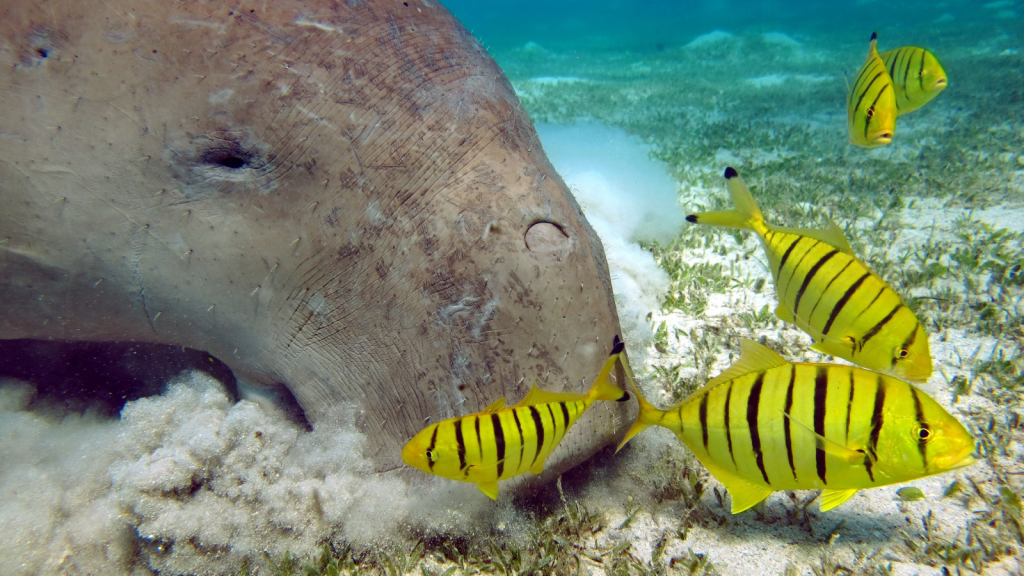
Dugongs have a large, complex stomach that helps them break down tough seagrass. Like cows, they are hindgut fermenters, meaning they have a special chamber in their digestive system where bacteria break down plant material. This efficient digestive system allows dugongs to extract maximum nutrition from their low-calorie diet of seagrass.
Dugongs Are Important for Seagrass Ecosystems
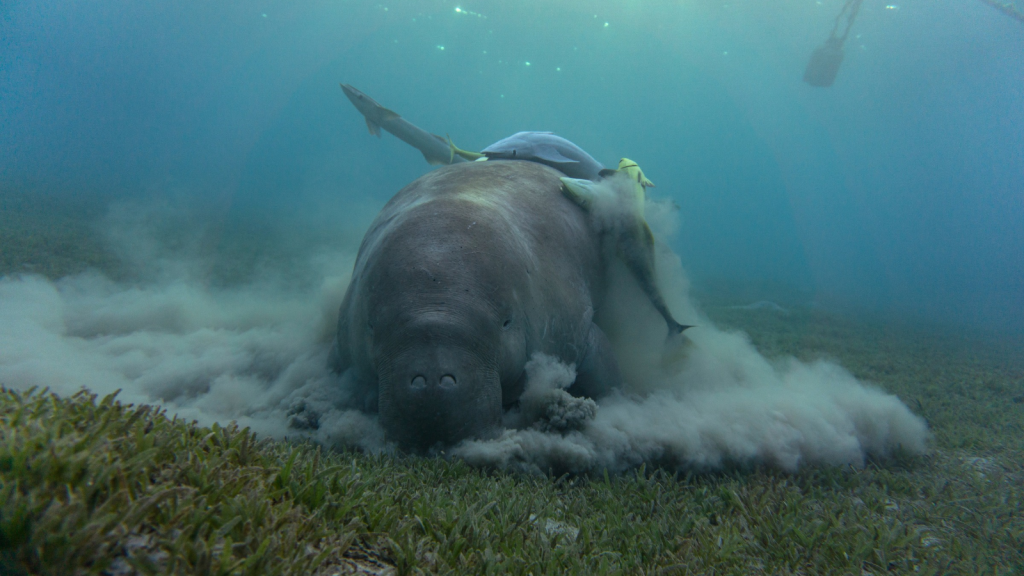
By grazing on seagrass, dugongs help maintain the health and diversity of these important marine habitats. Their feeding habits create patchworks in seagrass meadows, which increases biodiversity and provides habitats for many other marine species. Dugong faeces also act as a nutrient transport mechanism, moving nutrients from seagrass beds to other parts of the marine ecosystem.
They’re Protected in Many Countries
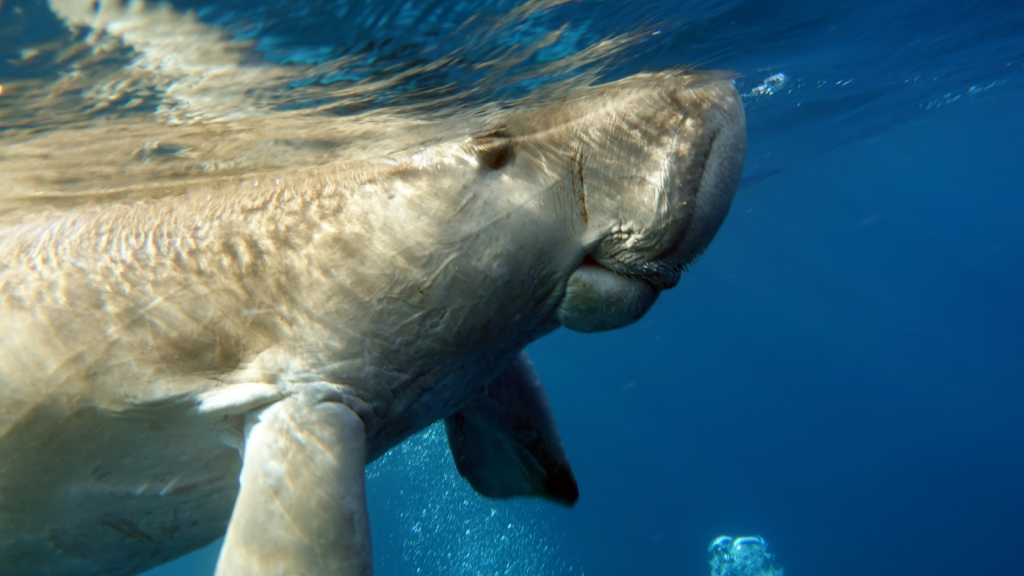
Recognising their ecological importance and vulnerability, many countries have laws protecting dugongs. In Australia, for example, it’s illegal to hunt, capture, or harm dugongs. However, enforcing these laws in remote coastal areas can be challenging. Some countries, like the United Arab Emirates, have established dedicated dugong sanctuaries to protect these gentle creatures and their habitats.
Becky is a fervent wildlife enthusiast and pet care expert with a diploma in canine nutrition. Her love for animals stretches beyond the domestic, embracing the wild tapestry of global fauna. With over a decade of experience in animal welfare, Becky lends her expertise to OutlandishOwl through insightful articles, captivating wildlife information, and invaluable guidance on pet nutrition. Her work embodies a deep commitment to understanding the intricate lives of animals and a passion for educating others on sustaining natural habitats. Becky's hands-on conservation efforts and her knack for translating complex dietary science into practical pet feeding tips make her an indispensable voice for creatures great and small.

